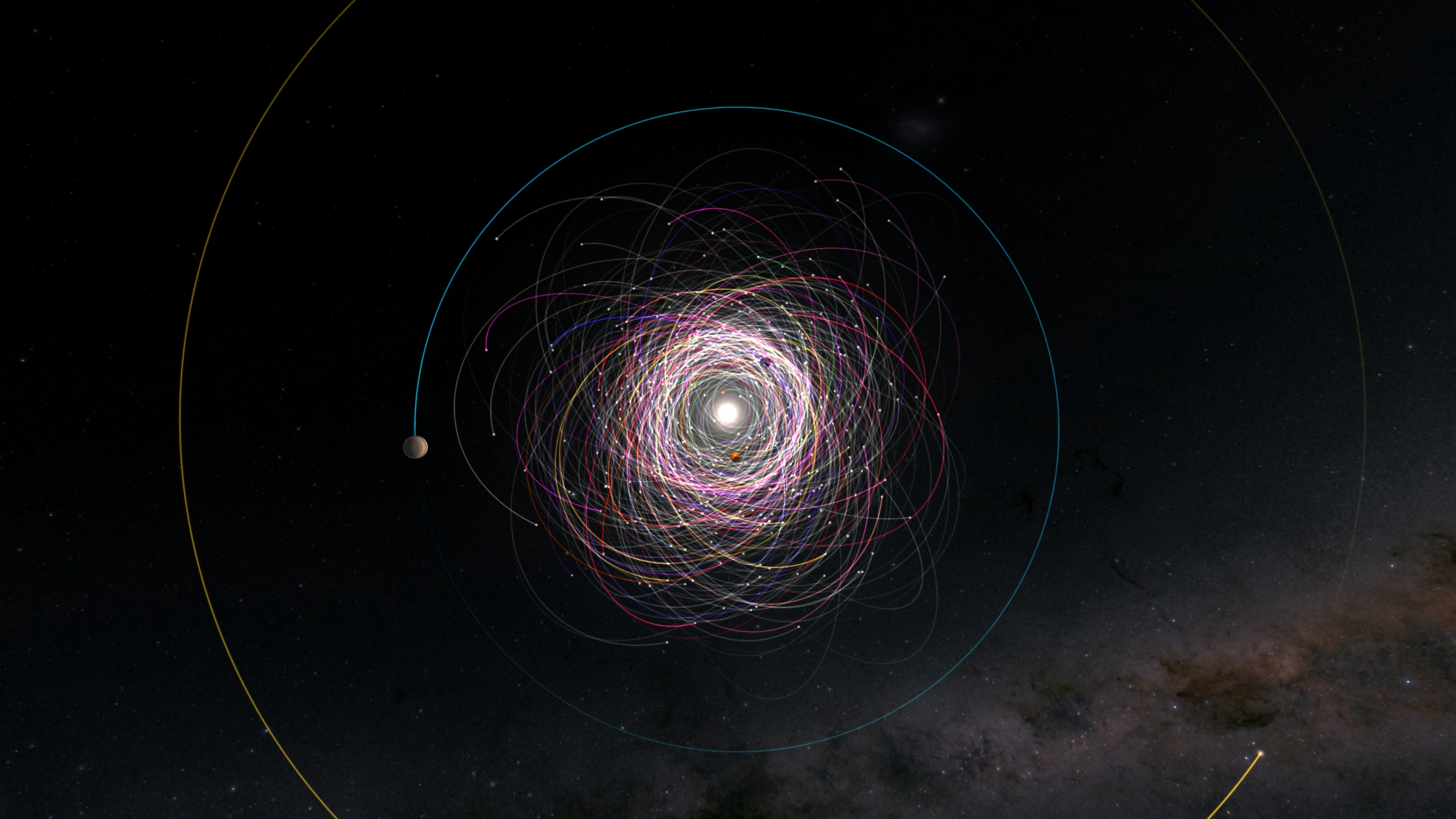The European Space Agency’s Gaia is for sure a marvel of engineering and an incredible observatory. It is busy creating the most accurate map of the Milky Way, measuring the position and motions of 1.8 billion stars so far. Scientists have published several papers that show that the data from the observatory goes far beyond even the scientific specification of the mission.
One of the most intriguing aspects of the new Focused Product Release is the spacecraft’s ability to study globular clusters. These are spherical collections of hundreds of thousands and in some cases many millions of stars. They orbit the Milky Way in the galaxy’s halo and their cores are packed with stars. So packed, in fact, that Gaia’s usual setup cannot truly distinguish between the different objects.
But scientists decided to push the observatory’s capabilities, using a mode not designed for science to look at the center of Omega Centauri, the largest cluster that can be seen from Earth, and quite a typical one at that. Many of these clusters are some of the oldest objects in the Universe, and Gaia has now shown it can study them as a whole.
“In Omega Centauri, we discovered over half a million new stars Gaia hadn’t seen before – from just one cluster!” lead author Katja Weingrill, of the Leibniz-Institute for Astrophysics Potsdam (AIP), Germany, and a member of the Gaia collaboration, said in a statement.
“It’s not just patching up holes in our mapping, although this is valuable in itself,” added co-author and Gaia Collaboration member Alexey Mints, also of the AIP. “Our data allowed us to detect stars that are too close together to be properly measured in Gaia’s regular pipeline.”
“With the new data we can study the cluster’s structure, how the constituent stars are distributed, how they’re moving, and more, creating a complete large-scale map of Omega Centauri. It’s using Gaia to its full potential – we’ve deployed this amazing cosmic tool at maximum power.”
Astronomers have been really clever in using every capability of Gaia, but even its standard approach to studying the sky is finding things far beyond its original scope. The satellite is seeing the light of distant quasars being lensed by the gravitational pull of some foreground object. These quasars provide insight into the distant universe and the cosmos as a whole.
“Gaia is a real lens-seeker,” said co-author Christine Ducourant of Laboratoire d’Astrophysique de Bordeaux, France, and a member of the Gaia collaboration. “Thanks to Gaia, we’ve found that some of the objects we see aren’t simply stars, even though they look like them. They’re actually really distant lensed quasars – extremely bright, energetic galactic cores powered by black holes. We now present 381 solid candidates for lensed quasars, including 50 that we deem highly likely: a goldmine for cosmologists, and the largest set of candidates ever released at once.”
And if these extragalactic discoveries are not enough, the product release has more insights into the inhabitants of the Milky Way. A new analysis characterizes the dynamics of 10,000 pulsating and binary red giant stars. This is the largest database on these objects to date. Another paper saw the faint signal from the gas and dust that floats between stars, an exciting new way to understand the galaxy.
And in our corner of the cosmos, Gaia was able to further characterize the orbits of 156,823 asteroids, making them 20 times more precise compared to the estimates from the Gaia Data Release 3 that was published in 2022.

Some of the orbits of the asteroids characterized by Gaia between Mars and Jupiter, and beyond.
“This data release further demonstrates Gaia’s broad and fundamental value – even on topics it wasn’t initially designed to address,” explained Timo Prusti, Project Scientist for Gaia at ESA.
“Although its key focus is as a star surveyor, Gaia is exploring everything from the rocky bodies of the Solar System to [multiple] imaged quasars lying billions of light-years away, far beyond the edges of the Milky Way. The mission is providing a truly unique insight into the Universe and the objects within it, and we’re really making the most of its broad, all-sky perspective on the skies around us.”
The fourth data release from Gaia is expected to be published no sooner than the end of 2025.
Find the cosmos mind-blowing? Join us for our first-ever free virtual festival of science, CURIOUS Live, where we’ll be talking with Prof. Pia Astone about how the destructive sources of gravitational waves can create precious elements. Streaming online on October 21, 2023, we have 10 talks across three virtual festival “stages” on Life, Death, and Creation (y’know, the small stuff). Sign up now to find out more and secure your spot.
Source Link: The Gaia Observatory Saw Stuff It Was Not Designed To See